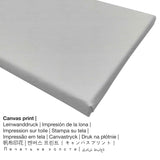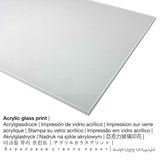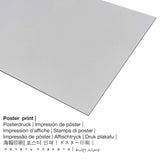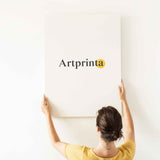Winslow Homer, 1903 - N'isi ụtụtụ mgbe oke mmiri ozuzo gasịrị - mbipụta nka mara mma
Ụtụ gụnyere. Mbupu gbakọrọ na ndenye ọpụpụ.
Na 1903 onye na-ese ihe Winslow Homer made this work of art. The more than 110 ụdị izizi nke afọ gbara nha: Nhazi: 111 x 160 x 12 cm (43 11/16 x 63 x 4 3/4 na); Ekebereghị: 76,8 x 127 cm (30 1/4 x 50 na). Mmanụ na kwaaji was applied by the American artist as the technique for the painting. The artwork's inscription is: "signed lower left: "HOMER / 1902"". Furthermore, the piece of art is included in the digital collection of Velọ ihe ngosi nka nke Cleveland in Cleveland, Ohio, United States nke America. a nkà nke oge a artwork, nke bụ akụkụ nke ngalaba ọha a na-enye ya site n'ikike nke Velọ ihe ngosi nka nke Cleveland. Na mgbakwunye, ọrụ nka nwere akara kredit ndị a: Onyinye nke JH Wade. N'elu nke ahụ, nhazi nke mmepụta dijitalụ bụ odida obodo na a akụkụ ruru nke 16: 9, nke pụtara na ogologo bụ 78% ogologo karịa obosara. The painter Winslow Homer was an artist, whose artistic style was primarily Realism. The artist lived for 74 afọ and was born in the year 1836 in Boston, Suffolk county, Massachusetts, United States and died in 1910.
Kedu ihe kacha amasị gị?
In the dropdown selection right next to the product offering you can pick the material and sizeaccording to your individual preferences. We allow yout to choose among the following variants:
- Mbipụta akwụkwọ mmado (akwa akwa akwa): The poster print is a printed sheet of flat canvas paper with a fine surface structure. A printed poster is suited for framing the art print with a personal frame. Please bear in mind, that depending on the size of the canvas poster print we add a white margin 2-6cm around the work of art, which facilitates the framing.
- Aluminom dibond mbipụta (ọla): Aluminium Dibond prints are metal prints with a true effect of depth. Its non-reflective surface structure make a modern look. A direct Direct Print on Aluminum Dibond is your ideal start to fine replicas on aluminum. For your Print On Aluminum Dibond, we print your chosen artwork on the surface of the aluminum material. The white & bright components of the artpiece shimmer with a silky gloss, however without any glow.
- Mbipụta kanvas: A canvas print is a printed cotton canvas stretched on a wood frame. Canvas prints are relatively low in weight, which means that it is easy to hang up the Canvas print without the use of extra wall-mounts. Because of thatcanvas prints are suited for all types of walls.
- Bipụta na iko acrylic na-egbuke egbuke (nke nwere ezigbo mkpuchi iko): A glossy acrylic glass print, often described as a UV print on plexiglass, will change your favorite artwork into great wall decoration. The great upside of a plexiglass fine art print is that sharp contrasts plus small color details will be more visible with the help of the subtle gradation of the picture. The acrylic glass protects your selected fine art print against light and external influences for many decades.
Important note: We try all that we can to describe the products in as much detail as possible and to exhibit them visually in our shop. However, the colors of the printing material, as well as the printing can differ marginally from the representation on the screen. Depending on the screen settings and the condition of the surface, not all color pigments are printed as realistically as the digital version shown here. Since all our are printed and processed by hand, there may as well be minor differences in the motif's size and exact position.
Nkọwa ihe ahaziri ahazi
| Nkewa edemede: | ọrụ mgbidi |
| Usoro mmeputakwa: | dijitalụ mmeputakwa |
| Usoro mmepụta: | mbipụta dijitalụ |
| Ihe ngosi: | emere na Germany |
| Ụdị ngwaahịa: | mmepụta ihe na-achọ |
| Ihe eji eme atụmatụ: | Ụlọ ihe osise nka, ihe ndozi ụlọ |
| Ndepụta: | nhazi odida obodo |
| Oke akụkụ onyonyo: | ogologo ruo obosara 16: 9 |
| Ntụgharị nkọwa akụkụ onyonyo: | ogologo bụ 78% ogologo karịa obosara |
| Akwa ngwaahịa dị: | acrylic glass print (nwere ezigbo mkpuchi iko), mbipụta akwụkwọ mmado (akwụkwọ kwaaji), mbipụta kanvas, mbipụta ọla (aluminium dibond) |
| Canvas dị n'elu ihe nrịbama (mbipụta kanvas) nha dị iche iche: | 90x50cm - 35x20", 180x100cm - 71x39" |
| Mbipụta iko acrylic (nke nwere ezigbo mkpuchi iko): | 90x50cm - 35x20" |
| Mbipụta akwụkwọ mmado (akwụkwọ kwaaji): | 90x50cm - 35x20" |
| Ụdị mbipụta Dibond (ihe alumnium) dị iche iche: | 90x50cm - 35x20" |
| Nhazi mmeputa nka nka: | na-enweghị etiti |
Tebụl a haziri ahazi nke ihe osise
| Aha nka: | "Early Morning After a Storm at Sea" |
| Nhazi nka: | sere |
| Okwu mkpokọta: | nkà nke oge a |
| Time: | 20th narị afọ |
| Emepụtara na: | 1903 |
| Ogologo afọ nka nka: | 110 afọ |
| Ọkara nke ihe osise izizi: | mmanụ na kwaaji |
| Nha nke ihe nka izizi: | Nhazi: 111 x 160 x 12 cm (43 11/16 x 63 x 4 3/4 na); Ekebereghị: 76,8 x 127 cm (30 1/4 x 50 na) |
| Akara mbinye aka: | signed lower left: "HOMER / 1902" |
| Ụlọ ihe ngosi nka: | Velọ ihe ngosi nka nke Cleveland |
| Ebe ngosi nka: | Cleveland, Ohio, United States nke America |
| Weebụsaịtị ihe ngosi nka: | Velọ ihe ngosi nka nke Cleveland |
| License: | ngalaba ọha |
| Site n'aka: | Velọ ihe ngosi nka nke Cleveland |
| kreditline ọrụ nka: | Onyinye nke JH Wade |
Tebụl nyocha nke onye na-ese ihe
| aha: | Winslow Homer |
| Aliases: | homer w., Homer, Homer Winslow, Winslow Homer, w. homer, הומר וינסלאו |
| okike nke onye nka: | nwoke |
| Obodo onye nka: | American |
| Ọrụ: | onye na-ese ihe |
| Country: | United States |
| Nhazi nke onye nka: | omenkà nke oge a |
| Ụdị nke onye na-ese ihe: | Ihe ngosi |
| Nwụrụ na afọ nke: | 74 afọ |
| Afọ ọmụmụ: | 1836 |
| Ebe amụrụ onye: | Boston, Suffolk County, Massachusetts, Njikota Obodo Amerika |
| Afọ ọnwụ: | 1910 |
| Obodo ọnwụ: | Prouts Neck, Cumberland County, Maine, Njikota Obodo Amerika |
Copyright right, Artprinta.com (Artprinta)
Artwork information by The Cleveland Museum of Art (© Nwebiisinka - site na Cleveland Museum of Art - Velọ ihe ngosi nka nke Cleveland)
The powerful Atlantic surf pounding against the desolate coast of Prouts Neck, Maine, provided primary subject matter for the dramatic paintings that Homer created during his final decades. This example, which the artist proclaimed as "the best picture of the sea that I have painted," was initially conceived as a watercolor. Undertaking the composition in oil after a lapse of nearly two decades, Homer patiently waited for the appropriate atmospheric conditions, executing the work in four different sessions spread over two years.














